The Revivalists have been busy this year as they are preparing to release their next studio album Pour It Out Into The Night on June 2. The band will also embark on a summer long tour across the US in May hitting major cities across the country with The Head and The Heart.
It’s important when touring to have a way to pass the time during long hours on the bus. For drummer Andrew Campanelli, that began as doodling, quickly expanding into making art pieces and eventually painting.
The Revivalists’ drummer is now involved with Punk Rock & Paintbrushes, which produces onsite art exhibits at galleries and music festivals around the world showcasing musicians’ original artwork.
Campanelli’s artwork is going to be on display alongside other musicians including Red Hot Chili Peppers’ drummer Chad Smith and Pennywise’s Jim Lindberg this weekend at BeachLife Festival in Redondo Beach, California. The artwork will also be displayed with the Punk Rock & Paintbrushes exhibit at Summerfest in July in Milwaukee.
Punk Rock & Paintbrushes teams up with a nonprofit at each event to raise awareness and funding from the sale of the musician’s artwork. The BeachLife gallery will focus on the Surf Rider Foundation and the Summerfest gallery will support Didi Hirsch Mental Health Service.
We caught up with Andrew in Part 1 of our interview series to talk about how he’s gotten into making visual art, why he teamed up with Punk Rock & Paintbrushes and the band’s Rev Causes.
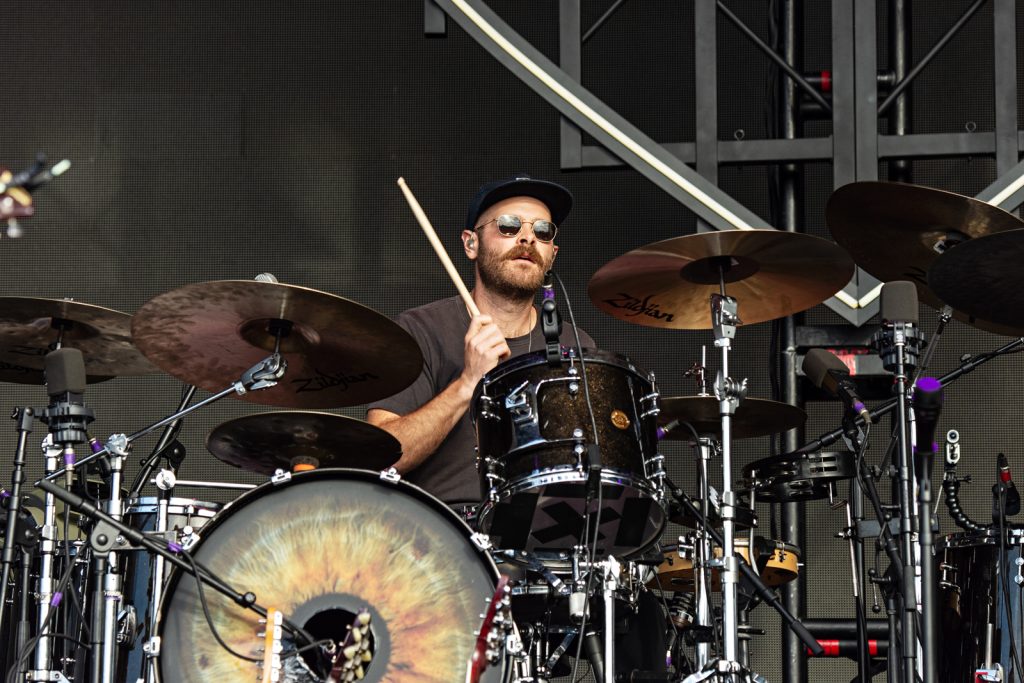
When did you start painting?
When I was young, I was really into all kinds of art. I was making visual art as a child, like all children do, before I got older and started playing music. I always had an interest in it and an aptitude for it, but I never studied it or pursued it.
Then a few years ago, maybe 2016-ish, we were on the bus a lot. It was around the time we had graduated from the van to the bus, so we had a lot of time sitting on the bus where I had space to draw for the first time.
I just started doodling on a napkin with a Sharpie, drawing lines and shapes. All of a sudden, all of this time sort of melted away; the hours that you have to kill between soundcheck and the show, or if you wake up in the bus at the venue and you have six hours before soundcheck, there’s just all sorts of time that you just sit around.
I started to fill that with these doodles because it was a meditative thing. I would just be like, ‘wow, where did all the time go? That was fun.’ I felt pulled to do it. My desire made me want to do it. I had no intention of really even showing people.
I didn’t think of myself as a great visual artist. I don’t think of myself like that. It was just this meditative thing that I started to do more and more. Then I got into a phase where I was just doing that all the time. I noticed that being on tour was what pushed me to do it at the beginning because I was looking for something to do, but it has become a really great outlet when I’m feeling burnt out on a particular thing – whether that’s writing, trying to get better at recording, practicing the drums, touring or playing shows.
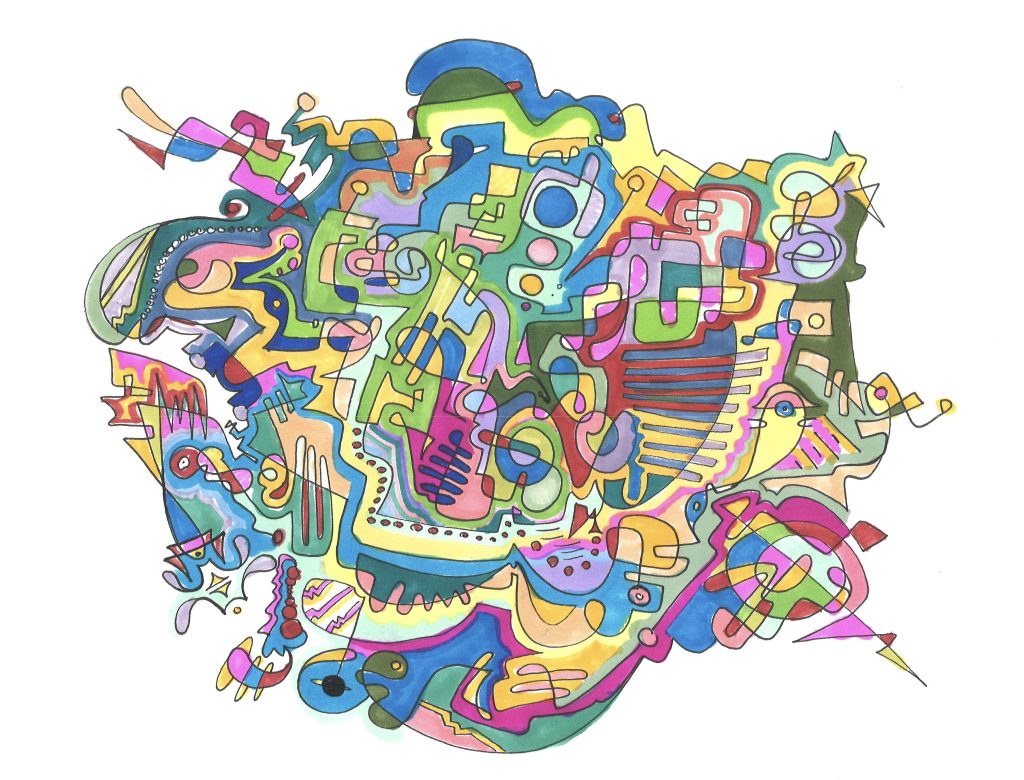
For so long, my creativity has come through musical outlets and in order to replenish the energy I have for music, it’s beneficial to translate or transition and do something with a different side of the creative brain. The kind of art that I do is really not supposed to look like anything. The doodles just go in all directions. I often don’t like it while I’m in the process of doing it.
Often, I’ll hate it for 2-3 days and then I look at it a few days later after not having been in it for a while and I’ll like it. Some of my favorite ones have started out as something I thought was a failed experiment, but then in a few days I’ve come around to seeing it without expectation of wanting to like it. And I accept it to be what it is. Some of my favorite pieces that I’ve made that I am most proud of are like that.
Same with songs. The songs I’ve written that I’m most proud of are usually the ones that kind of popped out in 5-10 minutes and then put down to come back and work on later to see if I can make it better. Then when I get back to it, I just think, ‘Oh, wow, this might be done or this is better than I even realized.’
A lot of people tell me that about music, like big hits that have been written in five minutes.
Oh, exactly. It’s funny. I read this book called Songwriters on Songwriting. It’s like an interview book. This guy interviewed Bob Dylan and Leonard Cohen. In the interview with Leonard Cohen, he asked the guy about being friends with Bob Dylan.
Leonard Cohen tells this story about asking Dylan how long it took to write “Blowin’ in the Wind”. And says Dylan said, oh, it took about five minutes. And he asked how long did it take you to write “Hallelujah”? And Cohen said, “I lied and told him it only took 15 years.”
I really love that interview, too, because it leads into talking about inspiration and how it’s different for everybody. Some people can just put them out like that, all the time. Bob Dylan is like that. If you make your living just being a songwriter, obviously you’re doing that all the time. But then you have people like Leonard Cohen or Erykah Badu. Erykah Badu says she’s downloading.
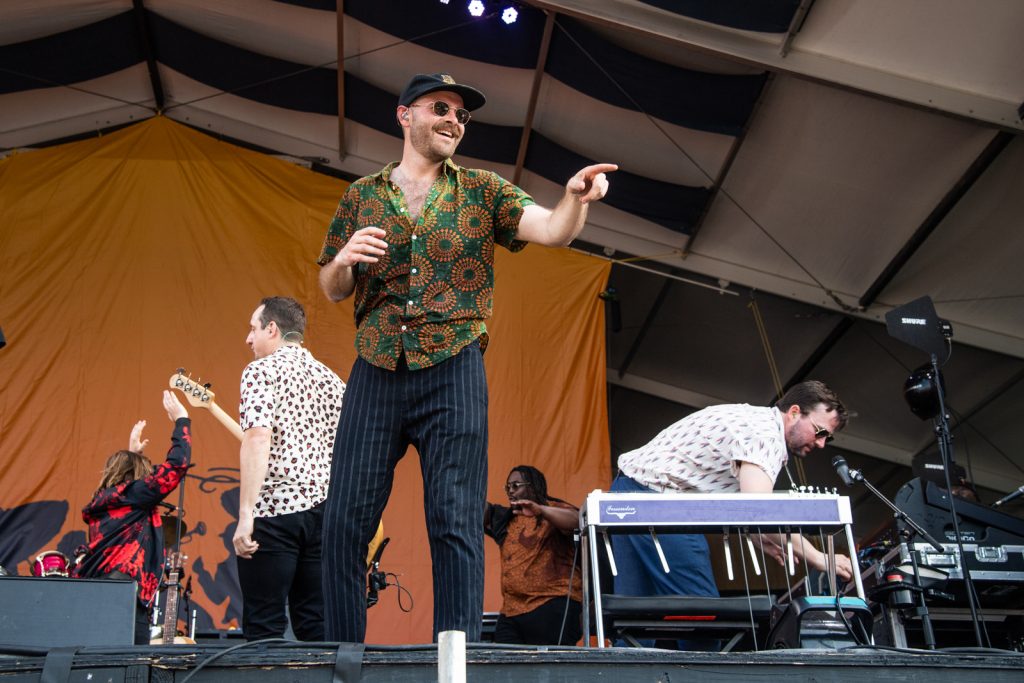
What is your inspiration was for the art? Does music or travel inspire you?
It’s interesting because it’s not exactly a 1 to 1 like that. Traveling definitely makes me see things, shapes or colors, but really when I go to art museums I get very inspired to make art.
Songwriting, I think, comes from traveling and experiencing things, living life, having realizations and having these feelings into songs more so than my art personally does. It’s a creative pursuit as a meditative, restorative thing for my overall creativity.
The biggest thing that kind of pushed me into really wanting to do this was reading a book about John Cage. It’s called John Cage: Zen Buddhism and the Inner Life of Artists. It talks about his whole experience of going through these rigid forms of music and then looking for silence, because he was studying meditation and Zen.
From learning about that, he began to understand there’s a different thing that you can do with art. Say you write a song and you put your thoughts and feelings in it. That is expressing your thoughts and getting that out.
But until the 12th century, music’s purpose was to calm the mind to make it receptive or susceptible to divine influence, especially Eastern music. The meditative state’s purpose is quieting your own thoughts and preconceptions of what’s good or what should be. As you’re getting into this space, it’s kind of like holding space for everything to be as it is, right?
When I’m making the art, I usually don’t think about what it’s going to look like that much. That has sort of shifted as I’ve gotten more into painting. Before I was drawing with ink and markers. As I’ve gotten into painting, things have shifted a little bit to where I conceive of a drawing beforehand, but even that I try not to do too much.
I just close my eyes, picture something and then just go. I can’t really explain how those shapes and things come together; it’s really just about playing with color and depth of field in the painting if I’m trying to make three dimensional spaces. I’m still trying to figure out what I’m doing with painting. I’m pretty new to it.

Have you taken any classes or any formal training?
No, I’m just trying to find my way through it. You know, it’s funny because it’s just like how a different guitar or a different drum set or a different microphone for a singer is going to make you hear things differently and make you maybe sing slightly differently. I’ve noticed that when I was drawing, the size of the paper, the size of the marker, the size of the pen all change completely what it looks like.
The painting is kind of an experiment. And that’s my favorite way to write music, too, to not have a preconceived idea of how I want it to sound. Sometimes with music, I hear it all in my head and I want it to sound exactly like that, but there’s also this space in between.
In the Rick Rubin book that just came out The Creative Act: A Way of Being, he talks about how art exists in this imaginative space, but it also exists in the physical world. Translating this imaginative source material into something that exists in the physical world is often a diminishing of that whole. You have to catch it and bring it into the physical world, so it can represent this other thing.
Musically you can hear something and say, I want it to be like this and then figure out how to make it like that. Or you can just get a bunch of new pedals, get a bunch of new instruments. I think sometimes when I get a new instrument, it has the songs in it, the way it feels, it’s tactile, the way it exists in the physical world changes how you interact with it and changes what comes out of you. It’s like a collaboration with the medium, whether it’s my Wurlitzer or whether it’s paint on canvas.
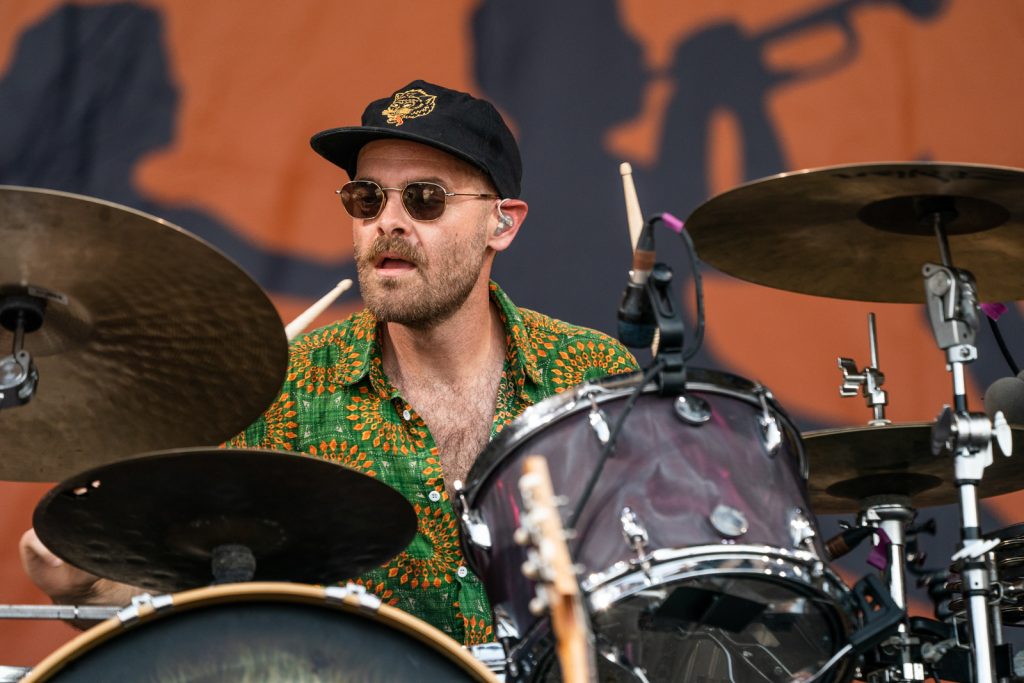
Are you selling the art now as well?
I’m selling it through these festivals with Punk Rock & Paintbrushes. One of my goals this year is to create a space for people to be able to buy these pieces and prints.
It has taken me a long time to feel comfortable selling it. People asked to buy them for a long time, and I would say no. But now I have like hundreds of them.
You have an inventory now.
Yeah, right, but it’s not even that. I just have to get them out. They’re just sitting there. Often, I would just rather give them away instead because I know so many great artists who have worked for so long, I didn’t want it to feel like, ‘Oh, look at me, I can sell art, too’. But enough people started asking that I finally started saying okay. It’s been really fun.
When you start out making music, you just make it in one way. Then you start making records and selling records and there are all these other things that could come in. Our band is fortunate that there are enough of us and we’ve been together for long enough to be each other’s barometer.
When something’s just art and you don’t add the idea of money into it, it’s slightly different than when you do. I don’t think it ruins it when you do, but I think that this was supposed to be my hobby, my thing to get away from art as work.
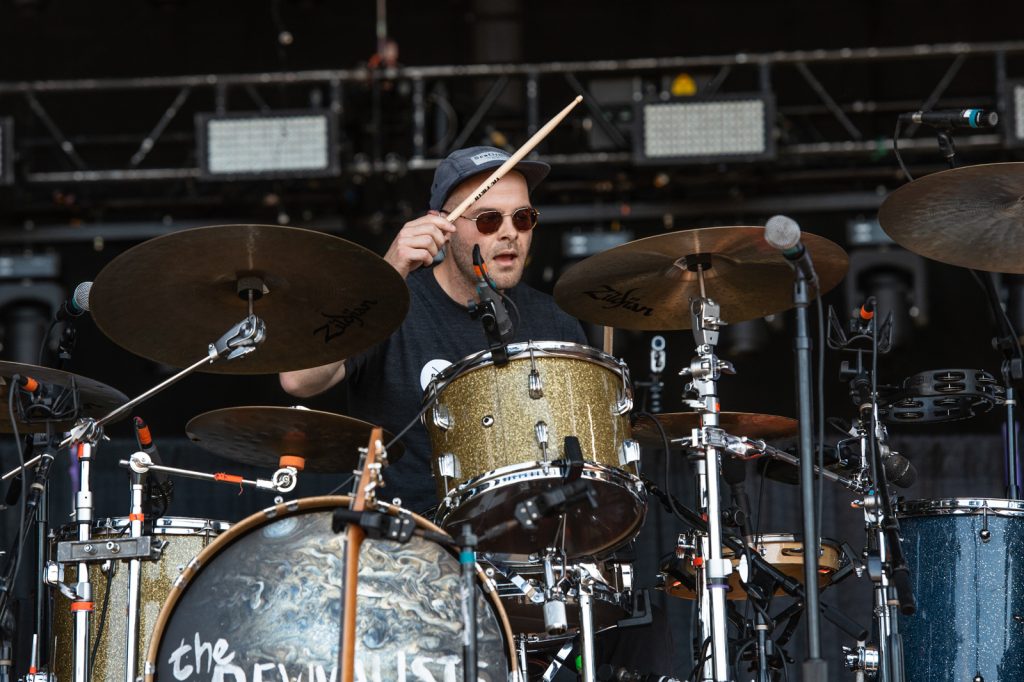
How did you get involved with Punk Rock & Paintbrushes?
We have a sound guy who’s a very good friend. His name is Jamie. When we were on tour, we would always go to museums together. He was into the same kind of art I was into, the John Cage/abstract expressionism.
I say those two things because John Cage was teaching about his ideas about Zen Buddhism to these classes at the New School, who then became sort of the abstract expressionists and that whole movement of Black Mountain, North Carolina in the 50s/60s. It came from this idea of Zen, of getting out of the way of your own aesthetic perceptions.
Like Jackson Pollock, that’s what his art is about: the action of the painting and less about what the painting looks like. It’s the artist as the doer. Going back to that John Cage book, there’s a quote where he says something like, everybody is an artist.
Everything can be done with an artistry. The greatest art is how we use our time while we’re here. You can make a painting and that affects the world around you. People see the painting and feel calm or feel angry, whatever.
You could do all that with the way you act as a person, the way you are in public. These are the ideas I was interested in and Jamie was interested in, too. And he knows Emily from Punk Rock & Paintbrushes and he introduced us. These exhibits are the first time my art was shown in public. She’s been great and I love working with them.
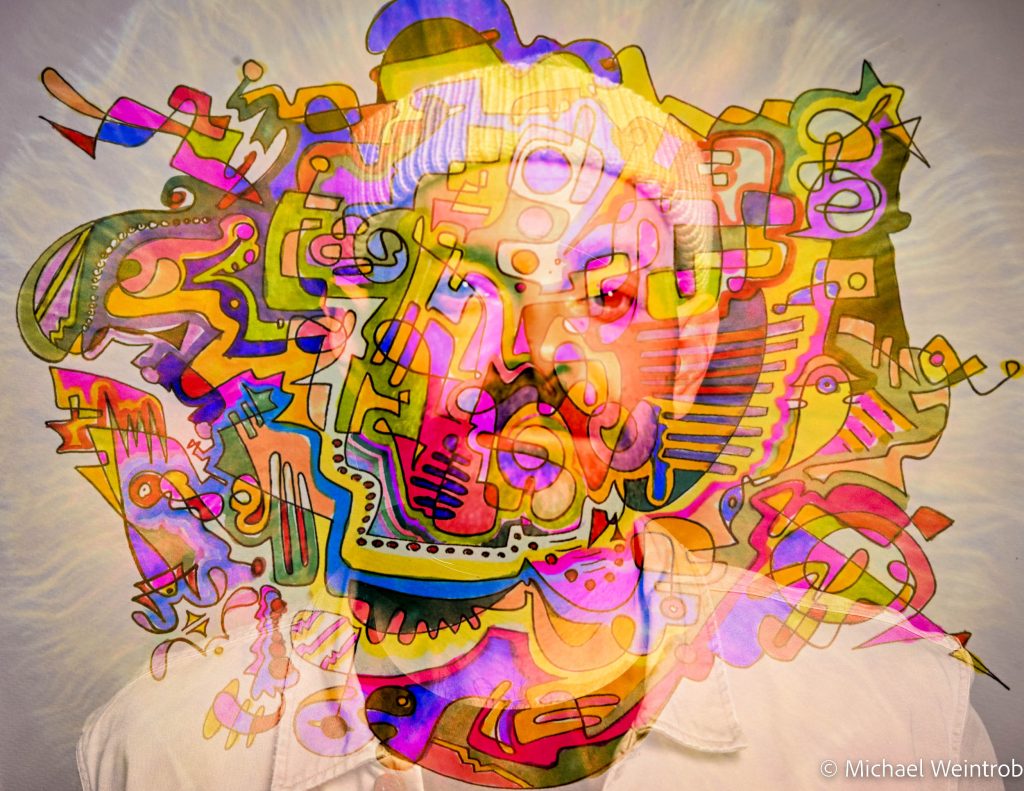
What are some of your favorite art museums to visit?
The Broad in LA. I went to the Guggenheim when they had this Hilma af Klint exhibit. They don’t have it up anymore, but that was one of my favorite museums I’ve ever been to and it was all just her art. She really speaks to me.
There’s a documentary that came out about her last year that was awesome. She was a spiritualist, she was into the occult, she was involved in out-there thinking in the early 1900s. I’ve learned in the art canon, people say that abstraction started with Kandinsky. But she was doing this art before that.
Her art was representing the other side, going into this spiritual space in the 1900’s but she knew she couldn’t show the work because it was too out there. So, her work came out in the 60s and when you look at it, there are prisms and it looks like Dark Side of the Moon. It looks like people saw her art in the 60s and were like, oh man, we’re going to use this stuff for album covers.
Way ahead of her time.
Right? So ahead of her time. She was doing something to represent multiple dimensions or the Fibonacci sequence of the spiral. She did things in really interesting ways about just interfacing with nature and the universe on the spiritual side of things.
Let me pick a third museum. I grew up in D.C., so I’ve always loved the National Gallery. I would also say the Tate Modern in London. It’s just really interesting.
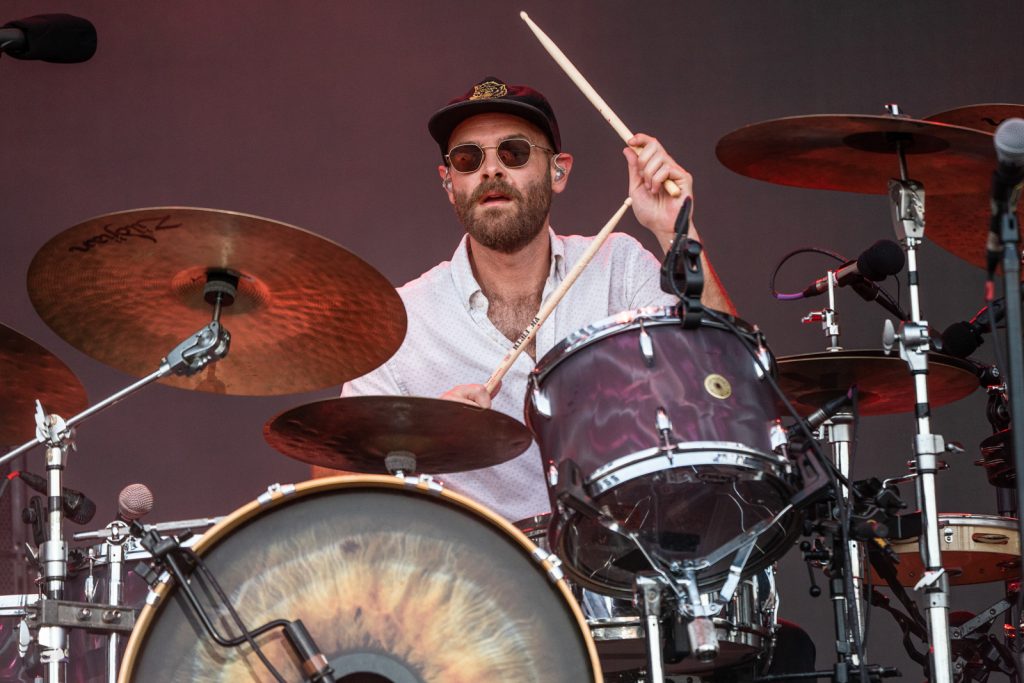
Can you tell readers about Rev Causes? Why is it so important to you guys and how do you go about picking those charities?
Rev Causes is an organization that we started to highlight the work of organizations that we feel aligned with. We give a portion of our ticket proceeds and we do various sorts of activations throughout the year to give to various causes.
As issues pop up like the Nashville tornados for example, you guys are always there to support the communities affected.
Yes. We’ll do event specific stuff, like t-shirts or merch items geared towards raising money just for that. That’s really important for us to do. The whole thing is really important for us to do because as we’ve grown, we’ve always had an idea about doing good in the world.
We’ve always wanted to be a force for positivity in our music and otherwise as well. As the profile of the band has gotten bigger and bigger, we’ve realized there’s an opportunity to highlight these things.
This is one of the ways we can utilize what’s happening with the band to highlight things that we believe in, whether it’s Musician’s Clinic, NAMI for mental health resources, cancer research organizations or youth band programs. We like to find things just like I learned from the John Cage book, that the greatest art is the way we use our time while we’re alive and the impact that we have on the world around us.

